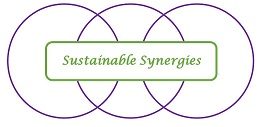“WA phenomenon remains incomprehensible as long as the field of observation is not sufficiently broad to include the context in which the phenomenon occurs.” – Paul Watzlawick
Perplexed by our brave new world ?
Value creation processes in Circular Economy context are built on a complex web of relationships between business activities, natural resources and social issues as illustrated below). These processes are indeed complex and appear chaotic if one does not look beyond the traditional division of responsibilities and the different areas of expertise involved. However, if the scope and duration of the observation is wide enough, it will reveal underlying patterns, interconnections, constant feedback loops, repetition, self-similarity, fractals and self-organization. These elements are of great help in uncovering the deep order that prevails in the system.

The value of system thinking
Factoring the environmental drivers for change in this fast-moving context goes further than acquiring and processing information. The traditional rational approach proves to be a heavy task because of the many variables, among which there are strong mutual interdependencies. Trying to overcome complexity this way requires enormous efforts while the validity of the outcomes remains questionable. System thinking works in another way, it is based on orderly questioning and hypothesis testing according to well-known archetypes. Because of the wide scope, it does not go so much into details, It rather considers the relationship between specific blocks and looks for leverage points. The table below compares the 2 approaches:

The role of stakeholders
System thinking about Circular Economy is unlikely to take place without considering the concerns of all the involved stakeholders. Understanding on which grounds they have formed their position leads to valuable sources of information and useful insights for engaging the dialogue. System thinking is an excellent tool to investigate how the different interests are articulated around Circular Economy issues and to explore the options to hammer out an integrated concept to be transposed to all the sectors concerned. The ambition is to go beyond consensus and to promote synergies for the optimized use of natural resources across different sectors.
